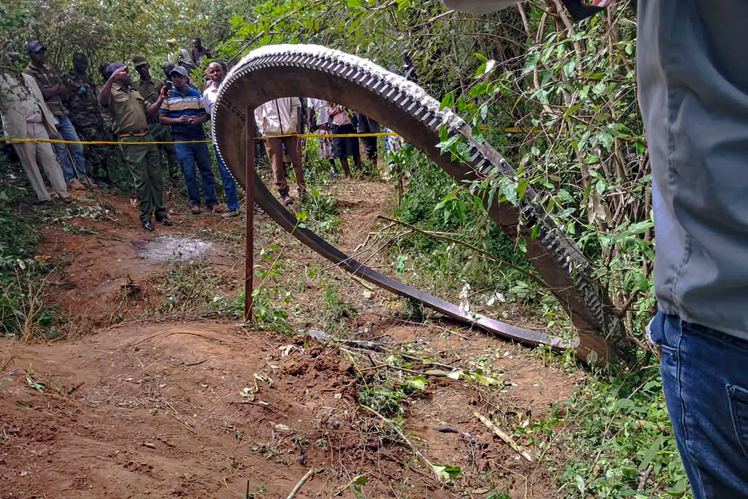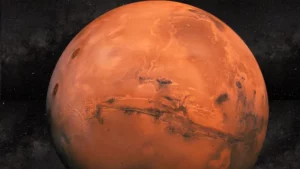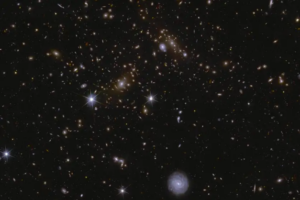TIL: Space Debris Is Falling From the Sky—And It’s More Dangerous Than You Think

🌍 The Rising Danger of Falling Space Junk
On December 30, 2023, at 3 p.m., the residents of Mukuku village, Kenya, were startled by a loud crash. A 2.5-meter-wide, 500-kilogram metal ring lay smoldering in a field. Meanwhile, in western Uganda, villagers witnessed fiery streaks before debris rained down over a 40-kilometer-wide area.
These weren’t meteorites—they were remnants of defunct satellites and spent rocket stages re-entering Earth’s atmosphere without warning. And such incidents are becoming more frequent.
Across the globe—from Texas to Saudi Arabia, Cape Town to the Amazon rainforest—space debris is falling from the skies. While some fragments burn up, heat-resistant materials like titanium survive and crash into populated areas. With thousands of satellites launched annually, few operators have plans for their safe disposal. This escalating problem puts people, property, and aircraft at risk.
🛰️ The Growing Space Junk Crisis
What’s Happening in Low Earth Orbit?
Low Earth Orbit (LEO), spanning 160 km to 2,000 km above Earth, is now the most crowded region of space. It hosts: ✅ Weather and communication satellites ✅ Imaging and research satellites ✅ The International Space Station (ISS)
However, it’s also clogged with over 6,000 tonnes of space debris. The World Economic Forum estimates that by 2030, over 60,000 satellites will have been launched—most destined to become uncontrolled space junk.
The Risk of Uncontrolled Re-entries
Many space agencies steer defunct satellites toward oceans, but a significant number are left to decay naturally. As they descend, some burn up, while larger components like rocket stages and fuel tanks survive, crashing into Earth at speeds equivalent to a small missile.
Why Is It Hard to Predict Crash Sites?
When objects fall from space, multiple unpredictable factors affect their landing spots: 🌍 Earth’s rotation and gravity 💨 Wind patterns and atmospheric conditions 🚀 Initial velocity and altitude
Mathematical models, like NASA’s Object Reentry Survival Analysis Tool, help estimate impact zones, but exact predictions remain difficult.
✈️ Space Debris Threatens Aviation
At any given time, 10,000+ aircraft are in the air. The uncontrolled descent of high-speed space debris through flight paths could cause a mid-air disaster. Yet, there are no global warning protocols for airlines and pilots regarding incoming space junk.
In 2022, US airspace was temporarily shut down due to an uncontrolled rocket body re-entry. With space activity increasing, such incidents will become more common unless stricter regulations are implemented.
💥 The Looming Danger of Kessler Syndrome
What Is Kessler Syndrome?
Proposed by NASA scientist Donald Kessler in 1978, this scenario predicts that when space junk density reaches a critical point, collisions will generate more debris, triggering a self-sustaining cascade of destruction.
🔴 As of 2021: Over 4,000 active satellites are orbiting Earth. 🔴 Estimated 600,000 debris fragments between 1 cm and 10 cm pose collision risks.
The European Space Agency (ESA) estimates that as of February 2024, there are 36,000+ objects larger than 10 cm orbiting Earth, with over a million smaller fragments. Even tiny pieces, moving at extreme speeds, can cause catastrophic damage.
The ISS is shielded with ballistic panels, but astronauts remain vulnerable, especially during spacewalks.
🌎 A Call for Global Space Traffic Management
Why We Need Space Traffic Control Now
As space congestion worsens, the world needs urgent intervention. Without regulations and tracking, the risks to satellites, human space missions, and Earth will only grow.
Key concerns: ⚠️ Lack of accountability for space junk ⚠️ No global coordination for controlled de-orbits ⚠️ Inadequate warning systems for falling debris
Space Junk Contributes to Light Pollution
Beyond safety concerns, space debris interferes with astronomical research. Reflections from space junk affect telescopes, and in 2024, astronomers mistook a SpaceX-launched Tesla Roadster for a potential asteroid, wasting valuable tracking resources.
🔥 The Time to Act Is Now
History shows that crises escalate into disasters when ignored. Space debris is no exception. If a large satellite crashes into a city, it could lead to devastating loss of life, legal chaos, and financial disaster.
What Needs to Be Done?
✅ Stricter international regulations on satellite decommissioning. ✅ Investing in space cleanup technologies (e.g., space debris removal missions). ✅ Developing global early-warning systems for re-entries. ✅ Mandatory controlled de-orbits for space missions.
If we fail to act now, we risk turning Earth’s orbit into an unusable junkyard. Collaboration between space-faring nations and private companies is essential to safeguarding our skies and ensuring a sustainable future for space exploration.







